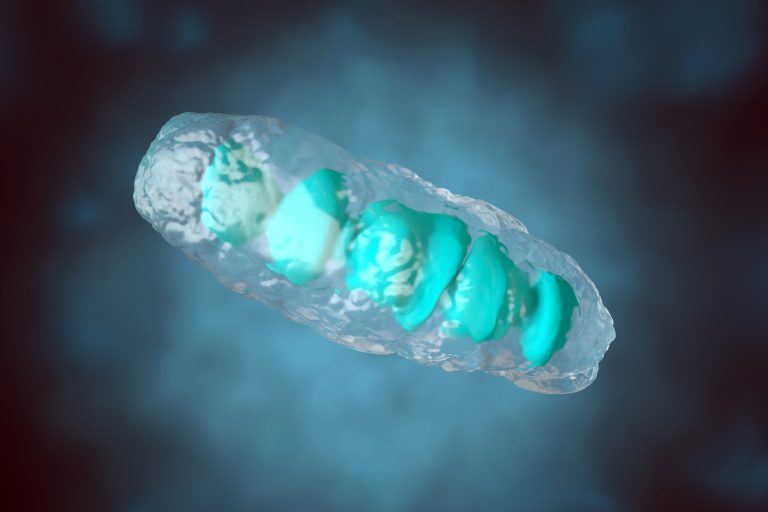
A new compound can remove defective mitochondrial DNA sequences from cells in the lab and could be the answer to better targeting of mitochondrial diseases in the future, according to research from Kyoto University in Japan.
Mitochondrial DNA diseases are common neurological conditions caused by mutations in the mitochondrial genome or nuclear genes responsible for its maintenance. Current treatments for these disorders are focused on the management of the symptoms, rather than the correction of biochemical defects caused by the mutation.
Now, scientists at Kyoto University’s Institute for Integrated Cell-Material Science (iCeMS) in Japan report a new approach where mutant DNA sequences inside cellular mitochondria can be eliminated using a bespoke chemical compound. The approach, which is described in the journal Cell Chemical Biology, may lead to better treatments for mitochondrial diseases.
“Mutations in mitochondrial DNA (mtDNA) cause mitochondrial diseases, characterized by abnormal mitochondrial function,” the researchers wrote. “Although eliminating mutated mtDNA has potential to cure mitochondrial diseases, no chemical-based drugs in clinical trials are capable of selective modulation of mtDNA mutations. Here, we construct a class of compounds encompassing pyrrole-imidazole polyamides (PIPs), mitochondria-penetrating peptide, and chlorambucil, an adenine-specific DNA-alkylating reagent.”
In some mitochondrial diseases, mutated DNA and normal DNA co-exist. “This state is called heteroplasmy,” said Kyoto University’s Takuya Hidaka, PhD, the first author of the study. “Mitochondrial function can be maintained by normal mitochondrial DNA when the heteroplasmy level is low. But it is impaired when mutated DNA exceeds a critical threshold. To cure mitochondrial diseases, we need to be able to remove mutant mitochondrial DNA from cells.”
Current approaches for such mitochondrial diseases are problematic, explained iCeMS bioengineer Ganesh Namasivayam Pandian, PhD, who led the study. Some involve injecting genetic material into cells, which could lead to unwanted alterations. In others, antioxidant drugs are administered to reduce the impacts of the mutant DNA, without addressing the core mutation.
The researchers designed a compound made of a mitochondria-penetrating peptide (MPP) bound to a polymer called a pyrrole-imidazole polyamide (PIP), which can be modified to target a specific DNA sequence.
The MPP takes the compound into the mitochondria, where the PIP binds to its target DNA sequence. The researchers demonstrated that the technique reduced the amount of mutant mitochondrial DNA in lab cultures of human cells. Further research using disease models is needed to determine the approach’s effectiveness inside a living organism.
“The programmability of PIPs to target different sequences could allow this class of compounds to be developed as designer drugs targeting pathogenic mutations associated with mitochondrial diseases in future studies,” concluded the researchers.
“Our proof-of-concept study can be extended to mitochondrial mutations that cause diseases like Leber’s hereditary optic neuropathy, an inherited form of vision loss that currently has no proven treatment,” said Pandian.













